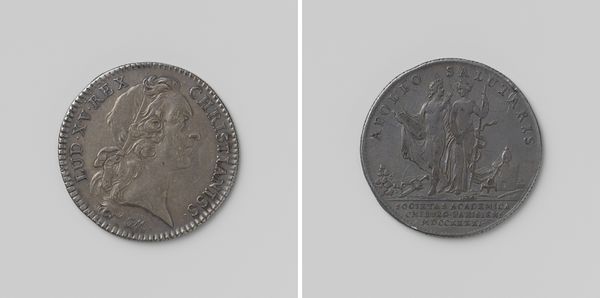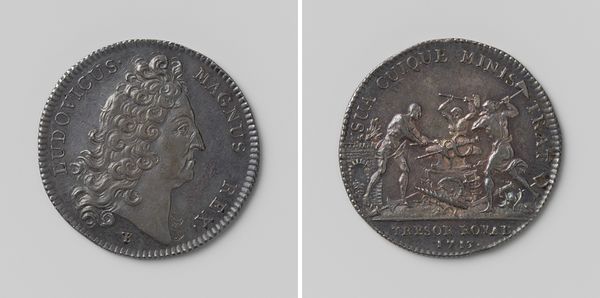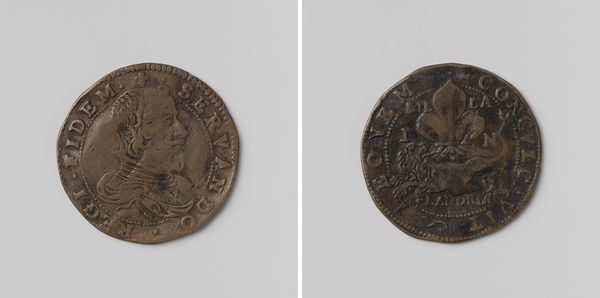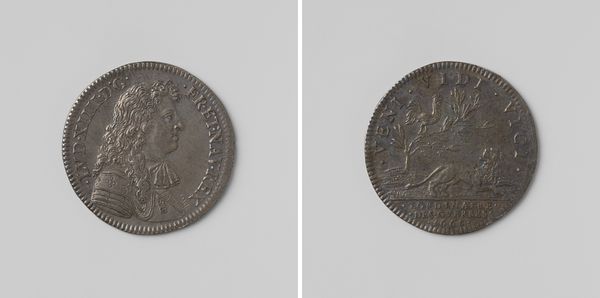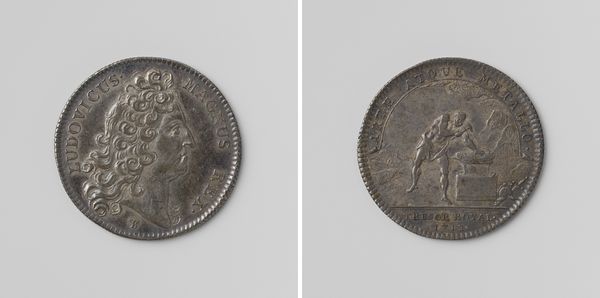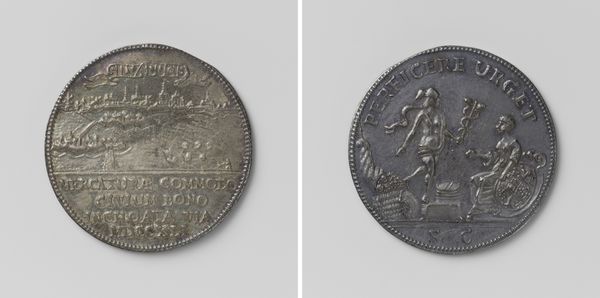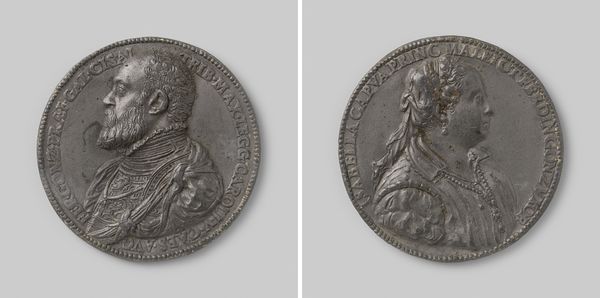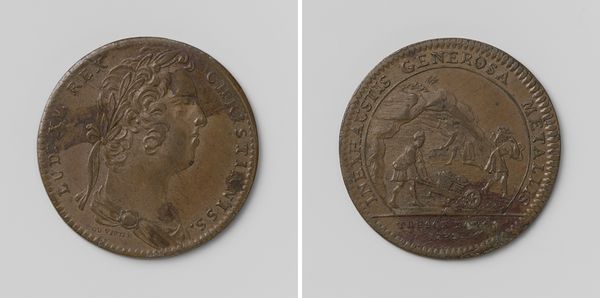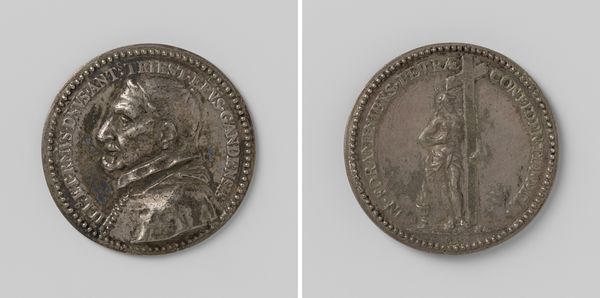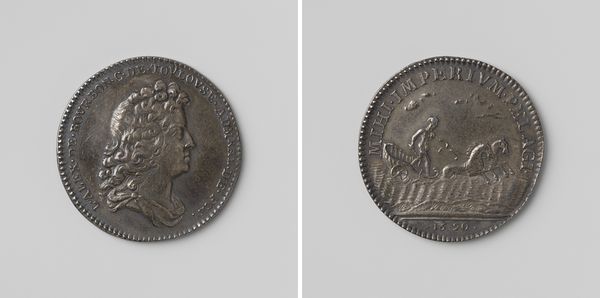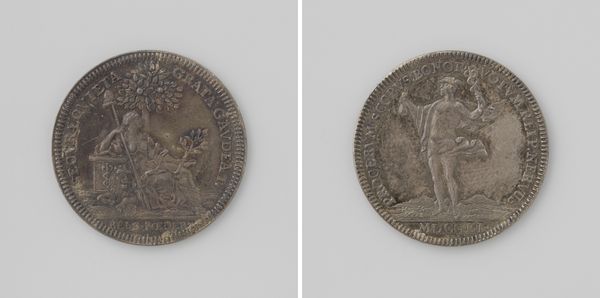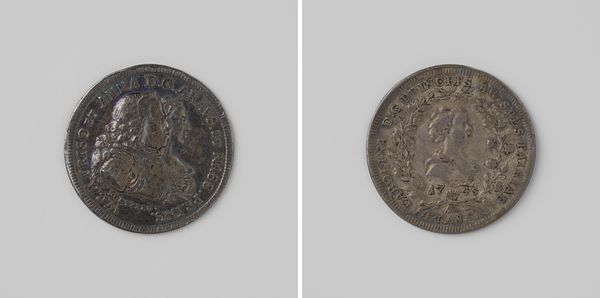
Overwinning op de Triple Alliantie, rekenpenning geslagen op last van 'Les Six Corps des Marchands' ter ere van Lodewijk XIV, koning van Frankrijk 1672
0:00
0:00
print, metal, relief, engraving
#
baroque
# print
#
metal
#
relief
#
history-painting
#
engraving
Dimensions: diameter 2.9 cm, weight 7.56 gr
Copyright: Rijks Museum: Open Domain
Curator: Look at this impressive medal. Minted in 1672, this commemorative piece celebrates Louis XIV's victory over the Triple Alliance. Commissioned by 'Les Six Corps des Marchands,' it offers a glimpse into the intersection of commerce, politics, and power in the 17th century. The piece is attributed to Monogrammist DF. Editor: It's striking, this blend of regal portraiture and classical imagery on a small metal disc. The figure on the reverse side seems poised with potent strength, his placement and posture feel significant. What's your read on this imposing figure, crouched over what appears to be a vanquished lion? Curator: Precisely. The symbolism is dense here. The lion, typically representing courage and royalty, symbolizes the defeated alliance, namely England, Sweden and the Dutch Republic. The muscular figure embodies France's might, seated victoriously after dismantling that coalition. Editor: The lion's pose and figure's body language clearly depict triumph over adversity. What do the architectural ruins symbolize? Is that the "concordia fratrum"? Curator: The broken structures speak to the disruption of peace and order among nations—a deliberate breaking of solidarity as France rose in prominence. "VINCIT CONCORDIA FRATRUM"— "He conquers the harmony of brothers". The inscription is not just about victory but about dismantling alliances and redefining power dynamics within Europe at this pivotal time, rewriting its alliances along French terms. The medal itself becomes a statement. Editor: It’s fascinating how cultural memory gets inscribed into these objects. A seemingly simple victory medal becomes a complex representation of power, international relations, and even the fragility of peace. Curator: Absolutely. The King's portrait, contrasted with this vanquishing figure, places the King not only as a leader, but a conqueror who brings France glory and shifts Europe's balance of power. The medal performs important ideological work here, crafting and disseminating this particular narrative. Editor: Seeing the world through symbols and allegory helps uncover these layered cultural scripts. I never would've suspected such complexities from what first appeared to be a simple historical memento. Curator: Yes, each image works in concert to cement this narrative. Approaching it this way helps us look beyond its immediate historical context to see what was strategically amplified, and who it served.
Comments
No comments
Be the first to comment and join the conversation on the ultimate creative platform.
